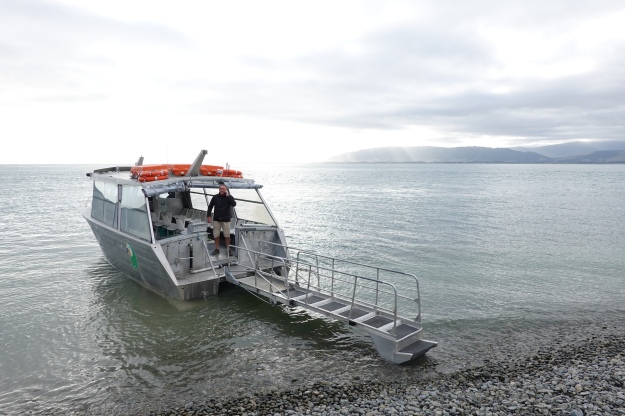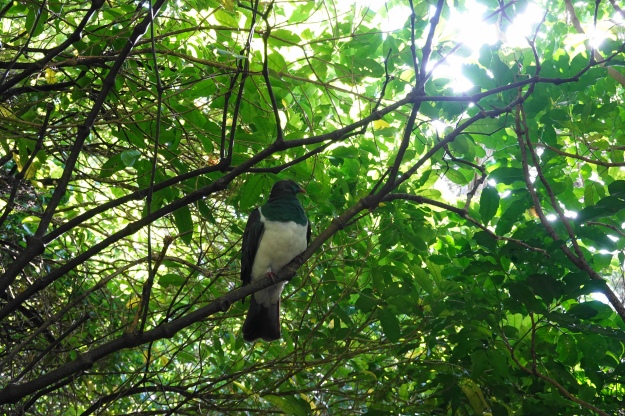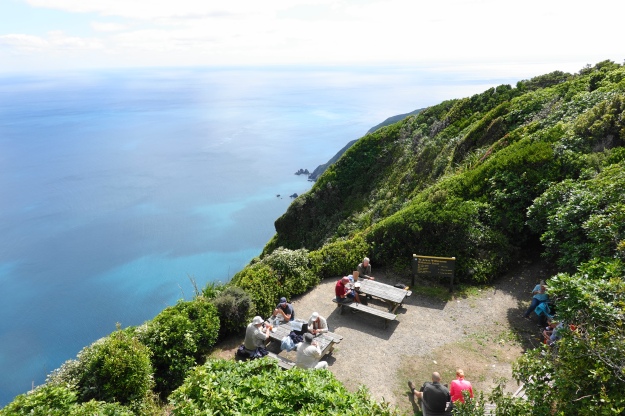March 11th and 12th

We flew from Queenstown to Wellington, NZ’s Capital to start our North Island journey. Above, Parliament, aka the Beehive. Below, National Museum, Te Papa was a gem.

Kapiti Island
New Zealand has an unusual natural history. It split off from Australia continent about 100 million years ago, at the dawn of mammalian emergence. Most animals on the Islands were reptiles and birds with only 2 species of mammals – both were bats. Therefore, the islands’ natural inhabitants were dominated by avian species. Lacking natural predators, many species lost ability to fly – Kiwi birds, New Zealander’s namesake, are an example. Arrival of first wave of human, the Polynesian islanders, about 1000 years ago started an avalanche of exterminations through hunting and habitat destruction which only accelerated after European immigrants brought in invasive mammal species such as possum, stoat (weasel), and cats. By mid 1900’s, New Zealanders, realizing their follies, put in earnest effort to resuscitate its native avian species by setting up island natural reserves, getting rid of all invasive pests on the islands and monitor coming and going of human traffic.
Kapiti Island, one hour north of Wellington, is such a reserve. Below, full view of Kapiti from our B&B in the seaside town of Paraparaumu.

Access to the island is by strictly monitored tour boats.

While we are not birders, we immediately noticed a chorus of bird songs upon arrival. Below, the rare and shy Takahe bird, once thought extinct, has been nursed back to about 300 strong in NZ.

An exceedingly friendly and curious Kaka (Parrot species) latched onto a fellow tourist uninvited.

Wood pigeon
Female Stitchbird 
Male stitchbird


Weka
Bellbird, an awesome bird song maker
We had time for a sunny beach break.